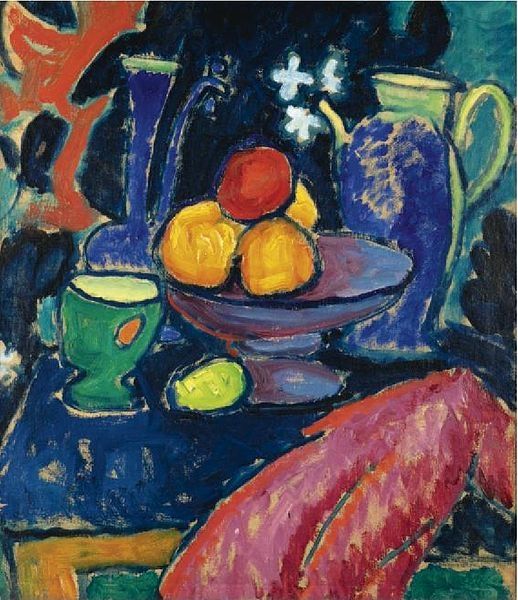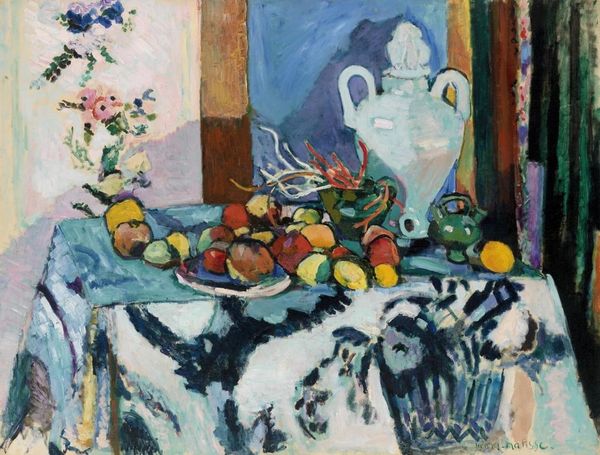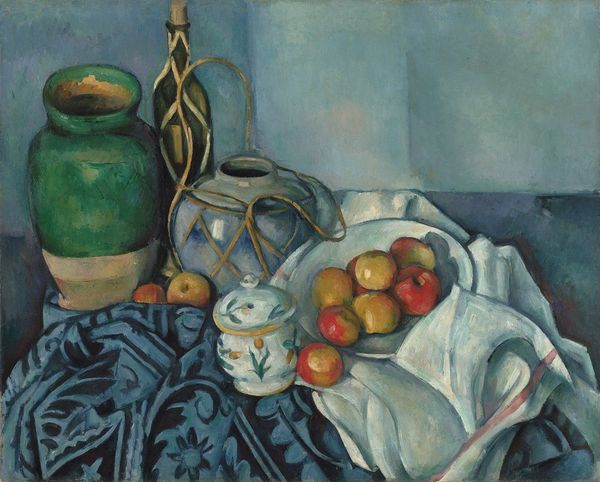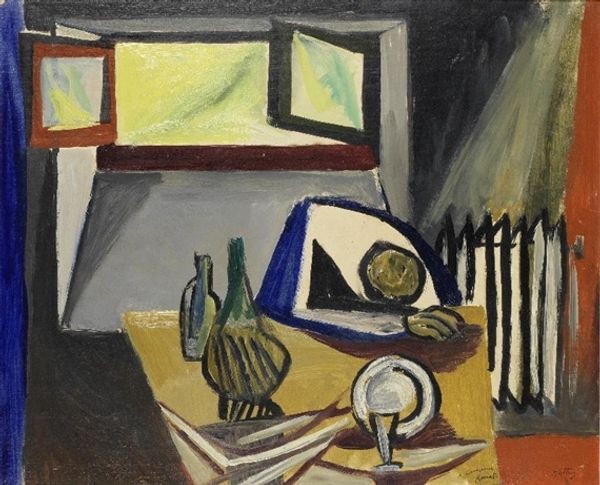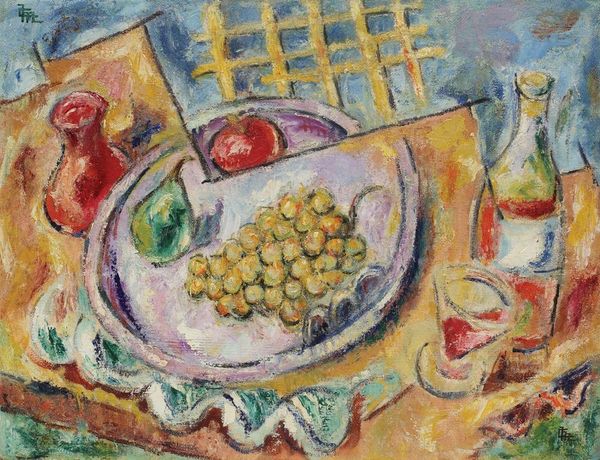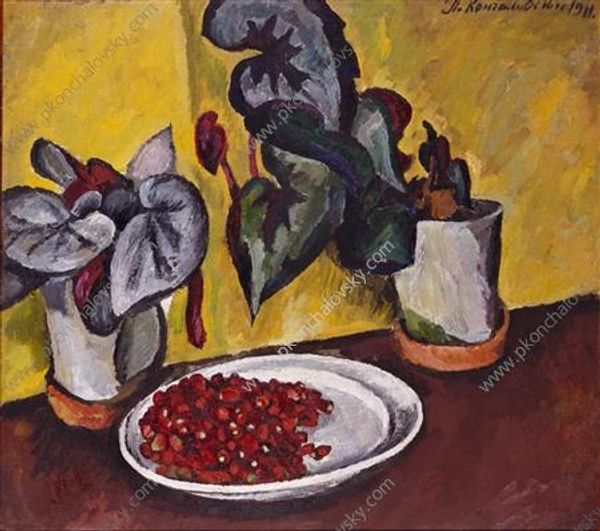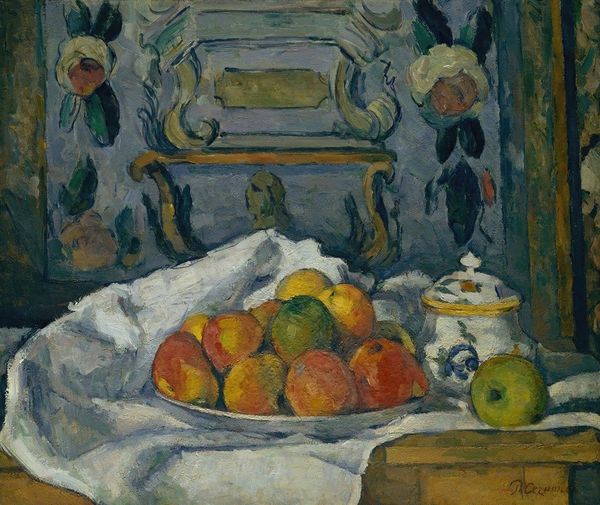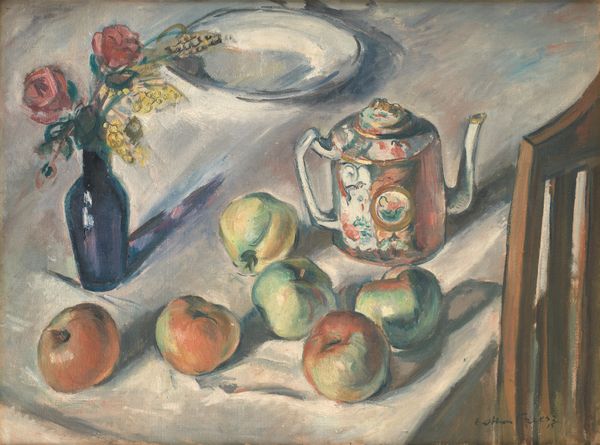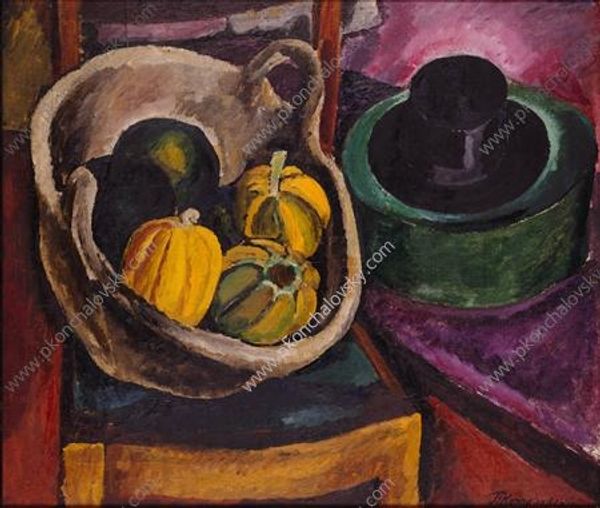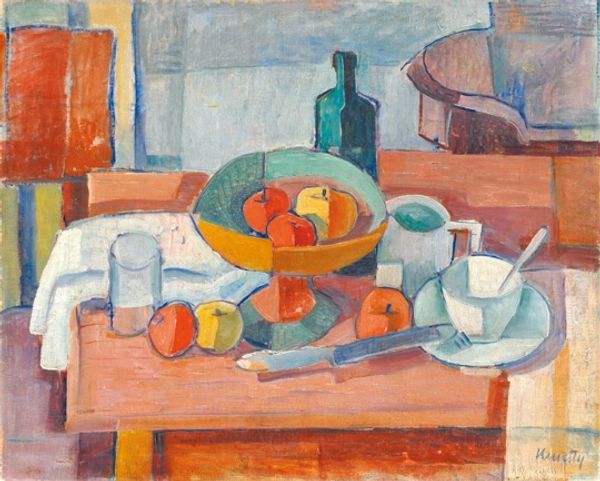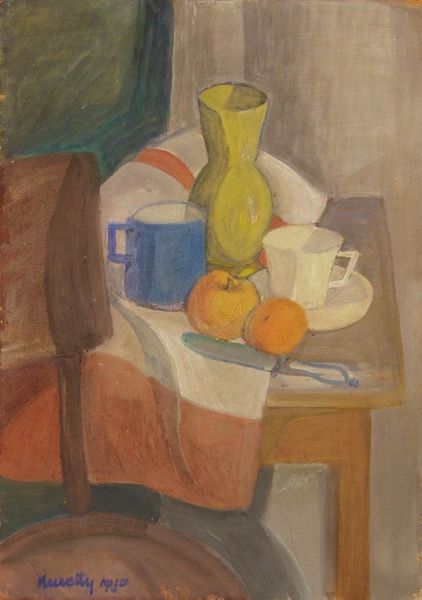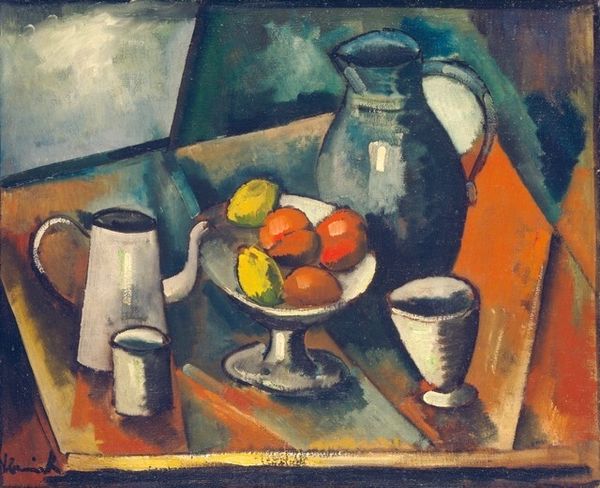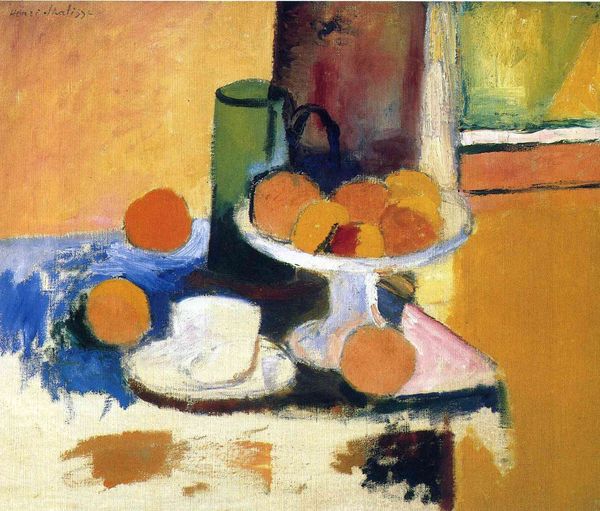
oil-paint
#
fauvism
#
fauvism
#
oil-paint
#
landscape
#
oil painting
#
modernism
Copyright: Public domain US
Henri Matisse made this painting of dishes and a melon in France, sometime in the first half of the 20th century. The painting may at first appear to be a straightforward still life. But, as art historians, we ask: how does this image create meaning and what can it tell us about the society in which it was made? Matisse was associated with the Fauvist movement, where artists experimented with intense, non-naturalistic color and simplified forms, challenging the traditional academic styles of the time. Here, we see an arrangement of everyday objects: dishes, fruit, and a vase, rendered with bold colors and loose brushstrokes. The composition is not about replicating reality. Rather, it is about exploring the expressive potential of color and form. Looking at Matisse's painting through the lens of social and institutional history, we might ask how the art market and the rise of modern art museums influenced artists like Matisse. The intense colors and simplified forms were a deliberate break from the past, reflecting a broader cultural shift towards abstraction and experimentation. By studying exhibition records, critical reviews, and the writings of the artists themselves, we can gain a deeper understanding of the social and cultural forces that shaped the art of this period.
Comments
No comments
Be the first to comment and join the conversation on the ultimate creative platform.
